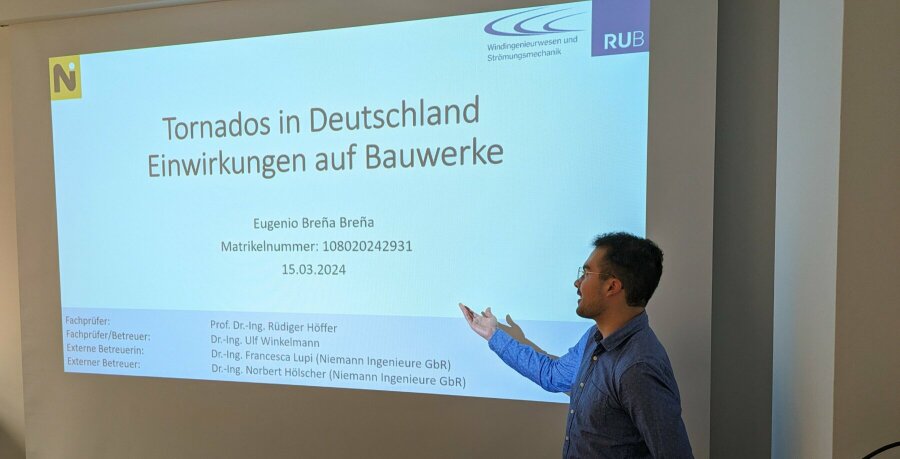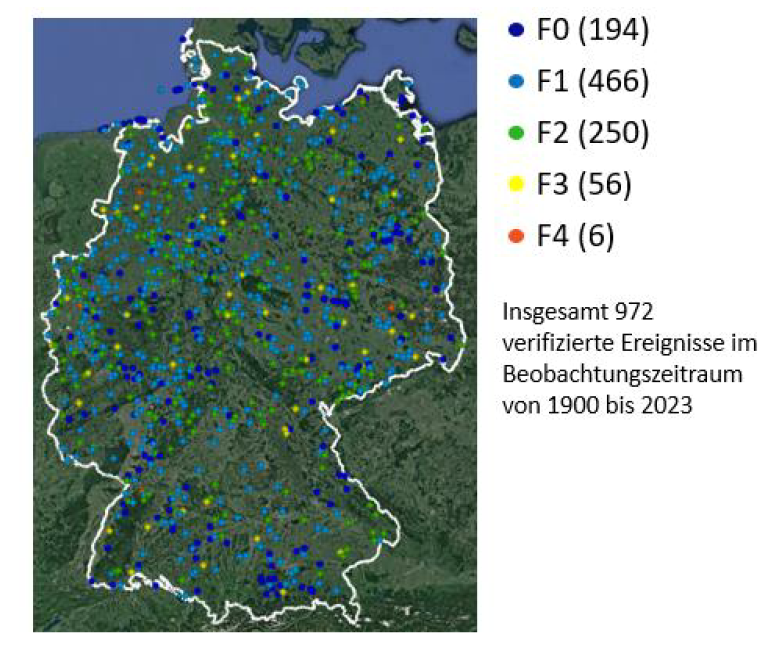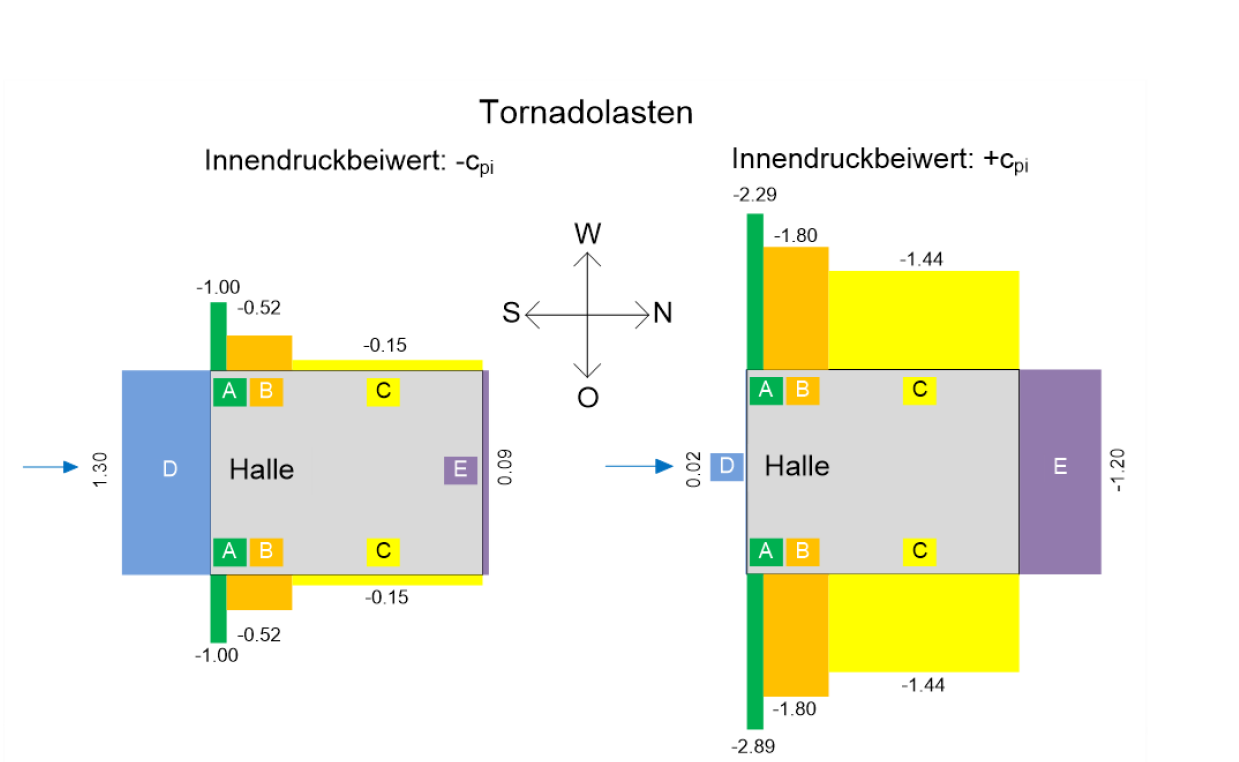Tornadoes pose a significant threat worldwide, with the advancement of technology over the last 30 years leading to increased detection of weather events and subsequently, documented tornado occurrences globally. While commonly associated with the United States, tornadoes also occur in numerous regions across South America, Europe, and Asia, including Germany. Their rapid onset and localized yet devastating impact make them a significant danger to human life and infrastructure.

Recognizing the need to prevent structural failures and associated consequences, the latest version of TRAS 320 mandates the assessment of tornado effects and loads. However, current German building codes do not address tornado loads, necessitating the development of an applicable methodology to determine the frequency of these events and their impact on buildings and structures.
The Bachelor thesis of Mr. Eugenio Brena Brena outlines a systematic approach to understanding tornado hazards, including their formation, characteristics, and classification. Utilizing data from the European Severe Storms Laboratory (ESSL), the frequency of tornadoes in Germany is discussed. Additionally, various national and international regulations governing tornado mitigation are presented.

The thesis then describes the graphical representation of tornado velocity and pressure profiles, enabling the identification of regions susceptible to tornadoes of varying intensities. Subsequently, a methodology for determining tornado loads, adapted from the United States and the ASCE codification, is described and compared with European standards before being tailored to the German context. Practical examples of tornado load calculations are provided using the modified methodology.
